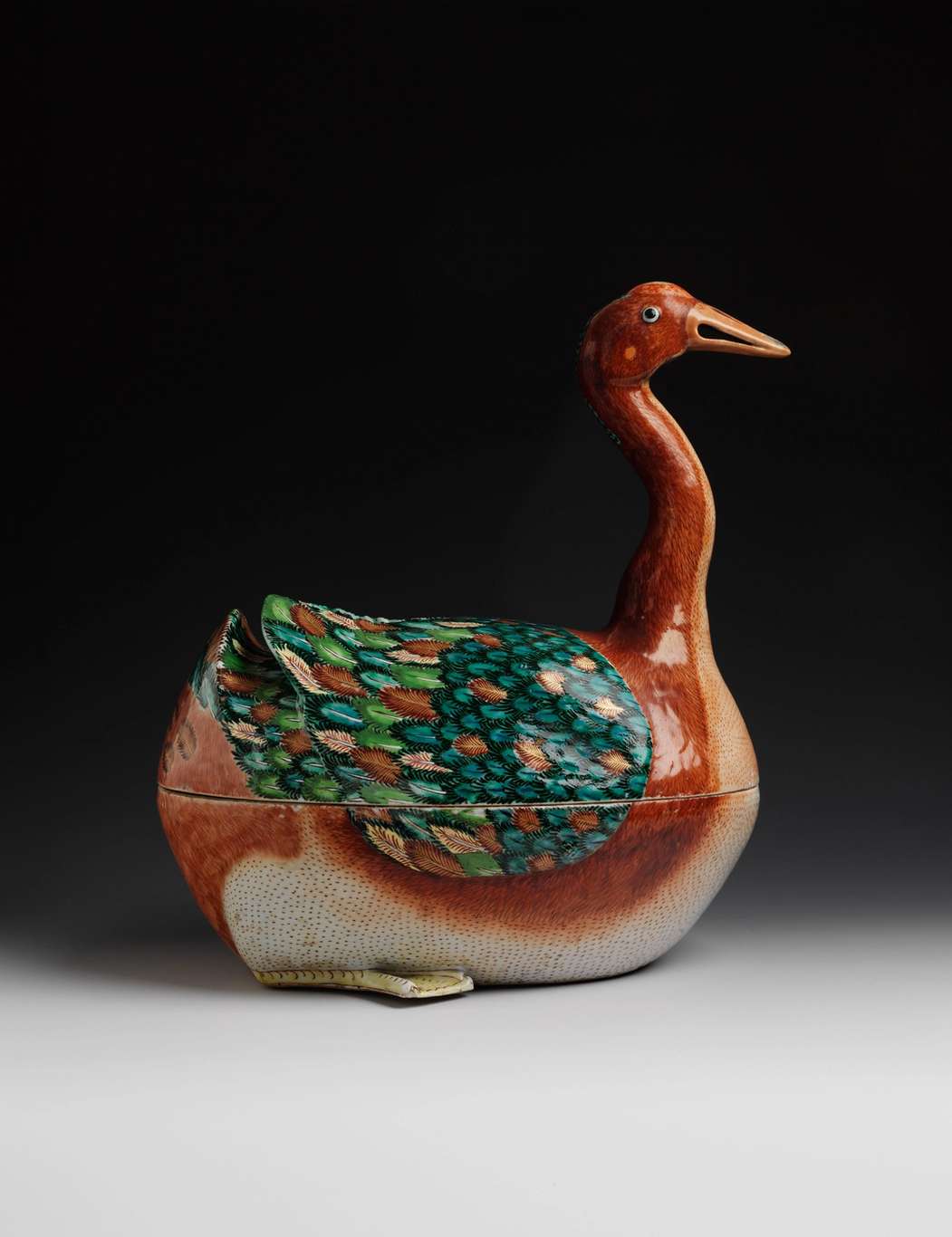Click the above image to zoom
Chinese export porcelain goose tureens and covers, Qianlong.
Sold
Stock Number: 7.5068AB
Superb and rare pair of Chinese export porcelain goose tureens and covers decorated in opaque enamels from the famille rose (fencai) palette, each naturalistically modelled as a seated goose with webbed feet tucked beneath the body, the head decorated with large alert eyes and a gilt beak, the long curved neck of the bird forming the handle to the cover, the wings neatly folded over the back of the body and the feathers brightly decorated in black, sepia, blue and green enamel, c. 1760, Qianlong reign, Qing dynasty, h. 38cm, 15in. 7.5068AB
◆ This pair of goose tureens is notable for their bright enamelling. Such decorative elements are complemented by the blue and brown feathers and the vivid orange beak that have been naturalistically rendered to result in highly attractive vessels that would have enhanced table services. A closely related example was sold twice at Christie’s London, 25th June 1979, lot 200, and again, 16th November 1981, lot 172.
According to David Howard and John Ayers in China for the West, vol. II, London, 1978, p. 591, the most likely origin for Chinese tureens of this type are the faience models produced in the Strasbourg factory under the Director, Adam von Lowenfinck between 1750 and 1754. Jean McClure Mudge in Chinese Export Porcelain for the American Trade 1785-1835, East Brunswick, 1981, p. 160 notes that the Dutch East India Company ordered twenty-five goose tureens in1765 and a pair of white-glazed goose tureens were given to the East India Marine Society of Salem by Captain Ward Blackler, now in the Peabody Essex Museum, Salem, which indicates the wide popularity of such vessels in the West. Further tureens of this form include one illustrated in Michel Beurdeley, Porcelain of the East India Companies, London, 1962, pl. 102; one from the Mottahedeh collection, published in Howard and Ayers, op. cit., p. 590, and sold at Sotheby’s New York, 19th October 2000, pl. 377; another from the Mr and Mrs Adolph Henry Meyer collection also sold at Sotheby’s New York, 20th January 1996, lot 4; and a fourth example sold at Christie’s London, 10th May 2011, lot 330.



